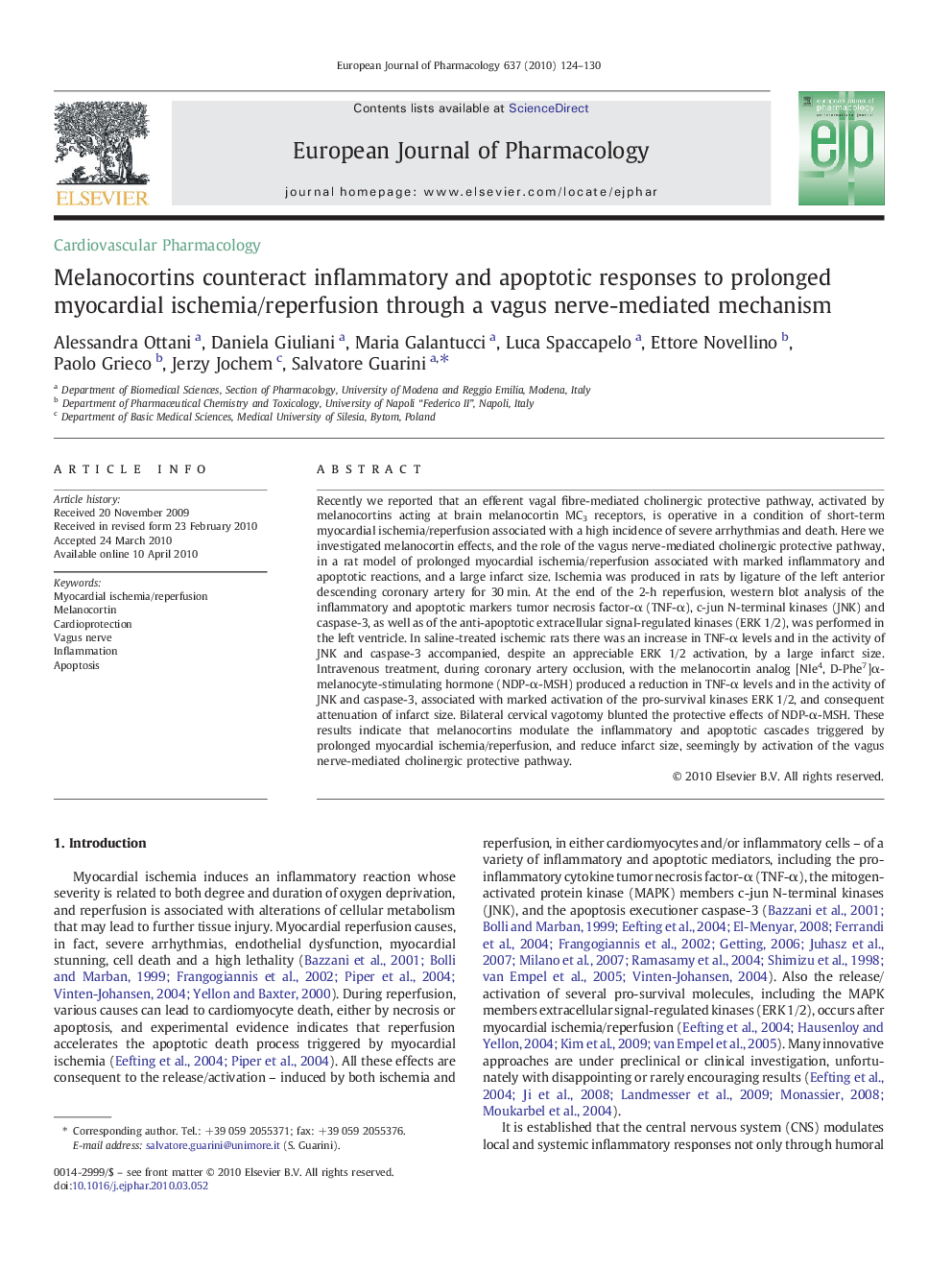| Article ID | Journal | Published Year | Pages | File Type |
|---|---|---|---|---|
| 2533483 | European Journal of Pharmacology | 2010 | 7 Pages |
Abstract
Recently we reported that an efferent vagal fibre-mediated cholinergic protective pathway, activated by melanocortins acting at brain melanocortin MC3 receptors, is operative in a condition of short-term myocardial ischemia/reperfusion associated with a high incidence of severe arrhythmias and death. Here we investigated melanocortin effects, and the role of the vagus nerve-mediated cholinergic protective pathway, in a rat model of prolonged myocardial ischemia/reperfusion associated with marked inflammatory and apoptotic reactions, and a large infarct size. Ischemia was produced in rats by ligature of the left anterior descending coronary artery for 30 min. At the end of the 2-h reperfusion, western blot analysis of the inflammatory and apoptotic markers tumor necrosis factor-α (TNF-α), c-jun N-terminal kinases (JNK) and caspase-3, as well as of the anti-apoptotic extracellular signal-regulated kinases (ERK 1/2), was performed in the left ventricle. In saline-treated ischemic rats there was an increase in TNF-α levels and in the activity of JNK and caspase-3 accompanied, despite an appreciable ERK 1/2 activation, by a large infarct size. Intravenous treatment, during coronary artery occlusion, with the melanocortin analog [Nle4, D-Phe7]α-melanocyte-stimulating hormone (NDP-α-MSH) produced a reduction in TNF-α levels and in the activity of JNK and caspase-3, associated with marked activation of the pro-survival kinases ERK 1/2, and consequent attenuation of infarct size. Bilateral cervical vagotomy blunted the protective effects of NDP-α-MSH. These results indicate that melanocortins modulate the inflammatory and apoptotic cascades triggered by prolonged myocardial ischemia/reperfusion, and reduce infarct size, seemingly by activation of the vagus nerve-mediated cholinergic protective pathway.
Keywords
Related Topics
Life Sciences
Neuroscience
Cellular and Molecular Neuroscience
Authors
Alessandra Ottani, Daniela Giuliani, Maria Galantucci, Luca Spaccapelo, Ettore Novellino, Paolo Grieco, Jerzy Jochem, Salvatore Guarini,
